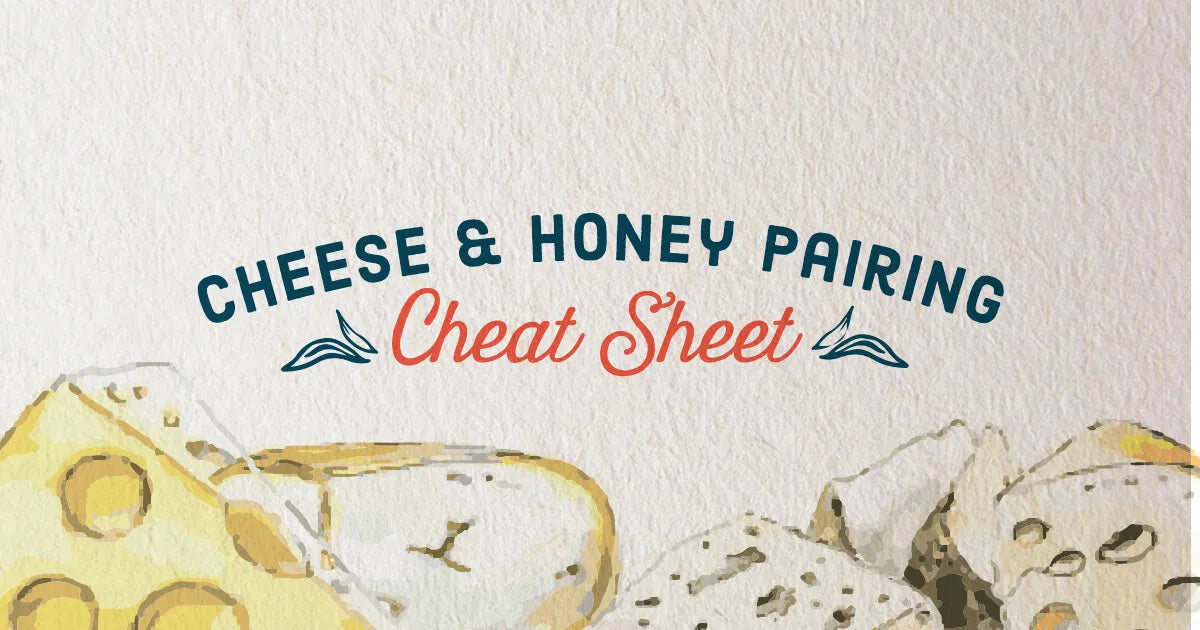A Honey Connoisseur’s Guide to Pairing Honey and Cheese
Honey Do's
Look, we know it as well as anybody: most people just use honey to sweeten their tea or coffee. But that’s not even close to the best way to use it. (Trust us, we’ve had honey on just about everything we can think of — even salmon.)
The actual best thing to eat with honey?
Cheese.
We know what you’re thinking: “What am I, French nobility? A member of the ancien régime? A fancy lad/lass who fancily eats fancy finger foods?”
Yes, “honey and cheese” not exactly a casual, everyday, rushing-out-the-door kind of meal, but get the pairing right just once, and you’ll find a way to make it an every-day thing.
Because the trick to truly unlocking the flavor of your Local Hive Honey is pairing it with the right cheese. It is absolutely a 1 + 1 = 3 situation, with new flavors you’d never noticed from both the honey and cheese jumping out at you.
Becoming a Honey Connoisseur
To become a honey connoisseur, there’s no better place to start than The Honey Connoisseur: Selecting, Tasting, and Pairing Honey by C. Marina Marchese and Kim Flottum.
In the section on honey pairing, they begin:
“Cheese is the perfect complement to honey, and you will quickly discover that there are countless pairings to please every palate. Our pairings do not require anything more than simply drizzling the honey over the cheeses.”
The striking thing about cheese and honey is that, unlike the mass-produced foods we take for granted, both have terroir: a unique flavor and character created by the region they were produced. They’re agricultural products and will always taste different depending on where they’re from (hence the importance we place on only sourcing raw & unfiltered, 100% U.S. honey.)
Marchese & Flottum continue:
Generally, cow’s milk cheeses have a buttery richness, goat’s milk has a tang, and sheep’s is known for its mellow nuttiness. These qualities may vary depending upon the terroir of the cheese, so always taste before pairing.
Step 1: Pick Your Honeys
You can choose between 23+ Local Hive Honeys in our online store. Each one has distinct flavors noted. While they’re all sweet, (and all taste like honey, duh) when you taste two side by side, those flavors really jump out.
Local Hive Northwest Blend has a warm, fruity, cinnamon taste like green apple pie.
Local Hive Oregon Blend is really fruity and confectionary. Think blackberries and cake frosting.
And the list goes on! Each honey is unique, and you’ll find something to love about each one. We definitely recommend getting two or three different honeys to compare. Pair each one up with the same cheese, and you’ll be amazed how different the cheese seems to taste.
Step 2: Pick Your Cheeses
Here’s a pro tip from The Honey Connoisseur we can totally get behind:
Shop for cheese at your local grocery store, and make sure to talk to the staff. Find out what they like, what they recommend, what’s fresh, what’s selling, what’s local — all of it will help you pick something truly special. And once they can tell you’re serious, there’s a good chance you’ll get some free samples to help make an informed decision.
While most us will inevitably stick to grocery store staples like cheddar, provolone, brie, muenster, Swiss, bleu, pepper jack, Havarti, and mozzarella, Marchese & Flottum have delicious cheese recommendations from all across Europe:
When deciding on a final array of cheeses, keep in mind that variety is key: variety of textures, flavors, colors, countries of origin. Pick 3–5 cheeses that look, smell, and taste genuinely different and get ready to explore just how much better they are with honey.
Step 3: Taste and Compare
Finally, the fun part! The Honey Connoisseur is the ultimate guide to tasting honey, but you can get a good sense of what to do from these tips and exercises.
- Pinch your nose, then eat a few drops of honey. Try to describe what you taste. Let go, then notice the intensity of new flavors that appear.
- Try multiple honeys with the same cheese, then multiple cheeses with the same honey.
- Go for a full charcuterie board with your honey: olives, crackers, bread, nuts, sweet meats, fruit, pickles, veggies, dark chocolate, and on and on.
- Check out the Honey Tasting Wheel developed by the authors of The Honey Connoisseur. Seeing all the possible flavors that can be found in honey can help you break out of your assumptions about what honey should taste like. And it’ll totally expand your vocabulary, so you can sound like a hot-shot honey connoisseur.

